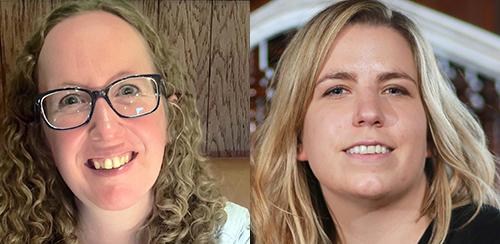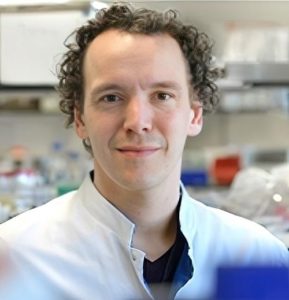BMJ Oncology Study Shows 79% Increase in Cancer among People under 50 Years of Age
Findings suggest new medical guidelines may be needed to determine when to perform clinical laboratory cancer screenings on people under 50
From 1990-2019, new diagnoses of early-onset cancer in individuals under 50 years of age increased by 79%, according to a British Medical Journal (BMJ) news release describing research published last year in BMJ Oncology. The question for anatomic pathology laboratories to consider is, why are more people under 50 being diagnosed with cancer than in earlier years? And do medical guidelines need to be changed to allow more cancer screening for individuals under 50-years old?
This new revelation challenges previously held beliefs about the number of younger adults under 50 experiencing early-onset cancer. Patients can sometimes miss symptoms by attributing them to a more benign condition.
“While cancer tends to be more common in older people, the evidence suggests that cases among the under 50s have been rising in many parts of the world since the 1990s. But most of these studies have focused on regional and national differences; and few have looked at the issue from a global perspective or the risk factors for younger adults, say the researchers. In a bid to plug these knowledge gaps, they drew on data from the Global Burden of Disease 2019 Study for 29 cancers in 204 countries and regions,” the BMJ news release states.
According to the news release, “Breast cancer accounted for the highest number of ‘early-onset’ cases in this age group in 2019. But cancers of the windpipe (nasopharynx) and prostate have risen the fastest since 1990, the analysis reveals. Cancers exacting the heaviest death toll and compromising health the most among younger adults in 2019 were those of the breast, windpipe, lung, bowel, and stomach.”
Although these statistics are being seen worldwide, the highest rates are in North America, Australasia, and Western Europe. However, high death rates due to cancer are also being seen in Eastern Europe, Central Asia, and Oceania. Economic disparities in the latter geographical regions may account for both fewer diagnoses and higher death rates.
“And in low to middle income countries, early onset cancer had a much greater impact on women than on men, in terms of both deaths and subsequent poor health,” the BMJ news release noted.

In an editorial they published in BMJ Oncology on the study findings, Ashleigh Hamilton, PhD (left), Academic Clinical Lecturer, and Helen Coleman, PhD (right), Professor, School of Medicine, Dentistry and Biomedical Sciences, both at the Center for Public Health at Queen’s University Belfast in the UK wrote, “The epidemiological landscape of cancer incidence is changing. … Prevention and early detection measures are urgently required, along with identifying optimal treatment strategies for early-onset cancers, which should include a holistic approach addressing the unique supportive care needs of younger patients.” Anatomic pathology laboratories will play an important role in diagnosing and treating younger cancer patients. (Photo copyrights: Queen’s University Belfast.)
What Caused the Increase?
“It’s such an important question, and it points to the need for more research in all kinds of domains—in population science, behavioral health, public health, and basic science as well,” said medical oncologist Veda Giri, MD, Professor of Internal Medicine, Yale School of Medicine, in a news release. Giri directs the Yale Cancer Center Early-Onset Cancer Program at Smilow Cancer Hospital.
Although experts are still trying to determine exactly where these cases are coming from, signs point to both genetic and lifestyle factors, the BMJ news releases noted. Tobacco and alcohol use, diets high in cholesterol and sodium, and physical inactivity are all lifestyle risk factors. Experts recommend a healthy diet and exercise routine with minimal alcohol consumption.
As for family history? “We’re beginning to recognize that family history is very important,” says Jeremy Kortmansky, MD, also a Yale Medicine medical oncologist.
According to CNN Health, these rates of early-onset cancer are more common in female patients, with rates going up an average of 0.67% each year.
“For young women who have a significant family history of cancer in the family, we are starting to refer them to a high-risk clinic—even if the cancer in their family is not breast cancer,” Kortmansky noted.
Doctors advise patients to implement healthy habits into their lives, not ignore symptoms, advocate for themselves, and be aware of their family history. Cancer patients may be prescribed cancer treatments at a much earlier age. Medical guidelines for patients may continue to shift and change. And oncologists may be incorporating alternative therapies to help younger patients deal with the shock of their diagnosis.
Will Cancer Rates Continue to Rise?
“Based on the observed trends for the past three decades, the researchers estimate that the global number of new early-onset cancer cases and associated deaths will rise by a further 31% and 21% respectively in 2030, with those in their 40s the most at risk,” the BMJ news release noted.
In an editorial they penned for BMJ Oncology on the findings of the cancer study titled, “Shifting Tides: The Rising Tide of Early-Onset Cancers Demands Attention,” Ashleigh Hamilton, PhD, Academic Clinical Lecturer, and Helen Coleman, PhD, Professor, School of Medicine, Dentistry and Biomedical Sciences, both at the Center for Public Health at Queen’s University Belfast in the UK wrote, “Full understanding of the reasons driving the observed trends remains elusive, although lifestyle factors are likely contributing, and novel areas of research such as antibiotic usage, the gut microbiome, outdoor air pollution, and early life exposures are being explored. It is crucial that we better understand the underlying reasons for the increase in early-onset cancers, in order to inform prevention strategies.”
Clinical laboratories should be aware of these findings and the changing landscape of cancer screenings, as they will play a key role in diagnoses. Younger patients may be advocating for cancer screenings and doctors may be ordering them depending on the patient’s symptoms and family history. Anatomic pathology professionals should expect new guidelines when it comes to cancer diagnostics and treatment.
—Ashley Croce
Related Information:
Global Surge in Cancers among the Under 50s over Past Three Decades
Shifting Tides: The Rising Tide of Early-Onset Cancers Demands Attention
Global Trends in Incidence, Death, Burden and Risk Factors of Early-Onset Cancer from 1990 to 2019
Early Onset Cancer Cases Rise 80% in Past Three Decades, BMJ Survey Finds
Cancer in Younger People Is on the Rise: Knowing Your Family History Can Help
Study Points to Big Surge in Under-50 Cancer Cases
Researchers See Surge in Number of People under 50 Diagnosed with Cancer




